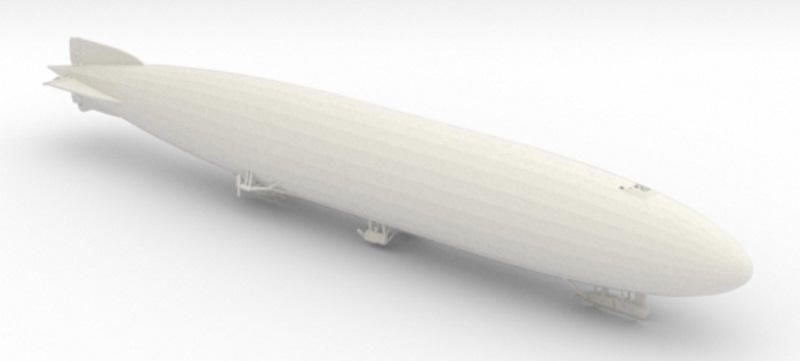
Schachtelinhalt Zeppelin R class
 Schachtelinhalt Zeppelin R class |
| DBTyp | Modell | |
| Basistyp | Zeppelin R class | |
| Kithersteller | Shapeways COB | (Shapeways:) http://www.shapeways.com |
| Material | 3D-Print Schemamodell | |
| Hersteller | Zeppelin | |
| Herstellerland | Deutsch | (Deutsch:) RLM-Liste Übergeordnete Kategorie: Europa |
| Betreiberland | Deutsch Für die Klasse: Deutsch GB USA | (USA:) US-Typenliste Übergeordnete Kategorie: Europa, Nordamerika |
| Bauepoche | 0 (ungebaut) | |
| Themen | Luftschiff Bomber Aufklärer | (Luftschiff:) http://en.wikipedia.org/wiki/List_of_Zeppelins (Aufklärer:) Aufklärungsflugzeug |
| Betriebsaera | WkI Für die Klasse: Interwar | (Interwar:) Zwischen WkI und WkII. Website mit Modellen zum Golden Age: http://www.wingsofpeace.net/gallery/Gallery_A.html |
| Scale | 1/700 | |
| TextDE | The genesis of the R Type was in March 1915 when the German Admiralty requested designs for the largest vessels that could be accommodated in the standard hangars then in existence at their North Sea bases. The resulting six engined ship marked the greatest advance in airship construction made throughout the war. Navy L30, the first of the class (Zeppelin build number LZ62), made her first flight on 28th May 1915 and with various modifications the basic design was repeated right through to the end of the conflict. Furthermore it played an indispensable role in the airship programmes of other countries: L33 made a forced landing in England in 1916 and the first successful British rigid airships, R33 and R34 (famous for the first two-way crossing of the Atlantic in July 1919) were copies of her design. The later L49 served as the basis for the construction of the U.S. Navy's first rigid, ZR1 the USS "Shenandoah". On learning about L30, British Intelligence nicknamed the R Types the "Super Zeppelins".(436) | |
| BaseVehicle | Flugzeug | |
| lime: | Hervorragende Quelle, kaum Fehler |
| green: | Sehr gute Quelle, kaum Fehler |
| schwarz oder blau: | Qualität der Quelle noch nicht angegeben |
| orange: | Gute Quelle, einige Fehler |
| red: | Quelle enthält mglw. einige korrekte Angaben, ist in jedem Fall einzeln zu prüfen |